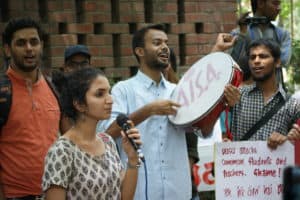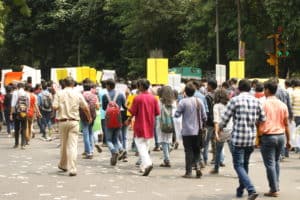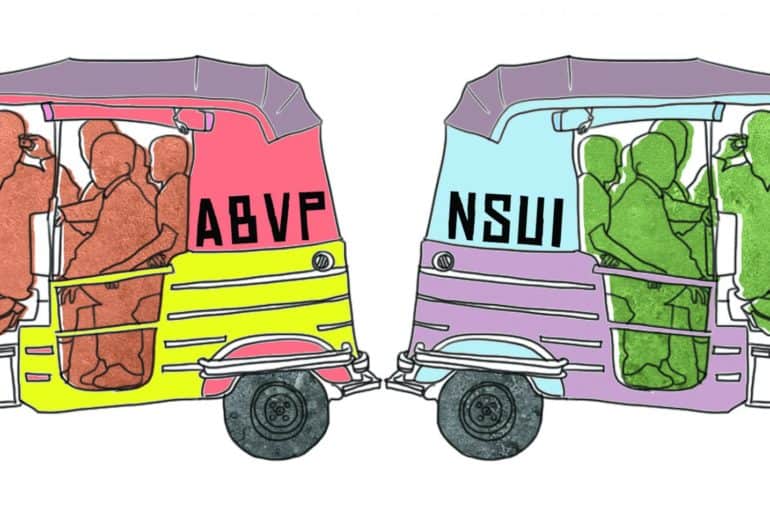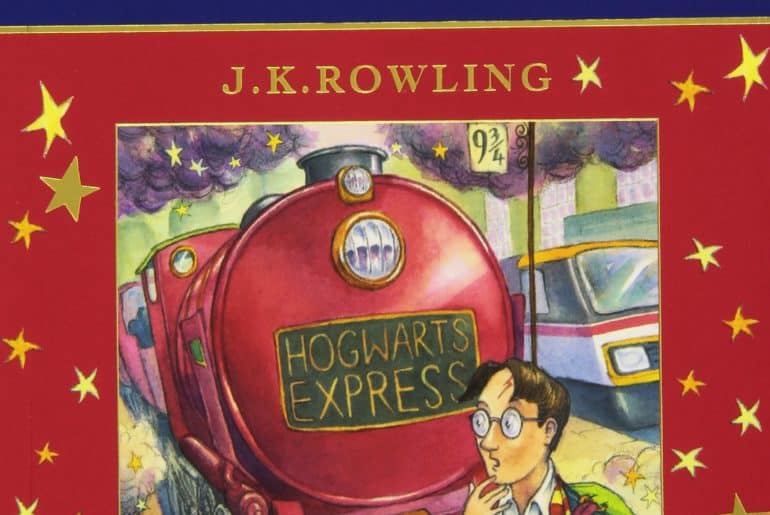For a visually disabled student, a task as simple as going from one classroom to another is very difficult without tactile paths. What facilities are available in the University of Delhi for students with disabilities? Let’s find out.
The built-up environment, meaning the basic amenities accessible to everybody to facilitate daily functions, is important. Hence, it should be barrier-free and adapted to fulfill the needs of all people equally. The needs of the differently-abled coincide with the needs of the majority. This is why planning for the majority implies planning for people with varying abilities and disabilities.
To ensure impartiality among students in the University of Delhi, the Equal Opportunities Cell was established in 2008, which works for the empowerment of students of the institution with certain disabilities and gives them equal opportunities in higher education.
The Equal Opportunities Cell, since its inception, has been working towards inculcating infrastructural changes in all the colleges that come under Delhi University to create an inclusive environment. Here are the facilities offered by some colleges in Delhi University:
1) Miranda House –






Miranda House has the Amba Dalmia centre within it’s library for the visually challenged students and also has computers that read out the text. There’s also an enabling unit called Lakshita. An app, which is installed in the phones of differently-abled students at the time of admission, called Digital Vision is also used. This app scans QR codes (which can be found outside every room) so that if somebody is within the radius of three feet from, the app is going to scan the code and give directions/number of steps to be taken. There are a number of ramps across the college. Braille books in the library and a Braille notice board are also available. There are scanners, e-book readers, voice recorders and a Braille embosser that converts printed text to embossed Braille dots for easy reading.
2) Lady Shri Ram College for Women –





Most of the buildings in LSR have ramps that make them wheelchair friendly. The college also has elevators for the same. However there are certain classes with a smaller door-frame which makes it difficult to enter with a wheelchair. The auditorium has a ramp but no railings, which can also lead to accidents. Menus and other important information is available in Braille. LSR also has a research centre for visually impaired students and almost all VCS get accessible readings. Workshops and mobility training for visually and orthopedically challenged students are also available.
3) Daulat Ram College –
DRC has a ramps in various places to make it wheelchair friendly. However the college has no elevators which could not allow wheelchair bound students to go beyond the ground floor. The college also has an enabling unit which assists students in multiple ways, including counselling them. NSS-DRC plays an essential role in helping differently-abled students. It provides them with volunteers who help them with assignments, help navigate across campus, act as writers during examinations and record audios and readings for them. These options are not exclusive to DRC students either, DRC-NSS co-ordinates and organizes these plans for students from different colleges and universities across Delhi. DRC also has an extensive collection of Braille books.
4) Hans Raj College –

HRC has four ramps across the college. Braille books and special softwares for the visually challenged students along with laptops are also provided to students. In addition, there is a Blind Students’ Club especially formed by Hans Raj College students to look after them. Hans Raj has both Equal Opportunity Cell (EOC) and Enabling Unit. The EOC provides the Enabling Unit with crutches, wheelchairs and angel recorders which end up helping VCS students, PwD students and orthopedically handicapped students. The EOC and Enabling Unit volunteers combined are more than 300. These volunteers help students in navigation, record books for them, help them with assignments and act as writers during examinations. Hans Raj has tactile paths both inside and outside the college. A lot of students had trouble feeling these tactile paths when they wore shoes. After three years of rigorous efforts, members of the EOC and Enabling Unit were able to get a tender passed which led to the installation of new tactile paths in the campus. The Equal Opportunity Cell and Enabling Unit also organized Roshini – an organ donation camp in association with National Organ and Tissue Transplant Organization. The “World White Cane Day” and “World Polio Day” are also celebrated in order to create awareness and to provide students with disabilities a platform to showcase their talents and express themselves.
5) Equal Opportunity Cell, University of Delhi –
EOC DU organizes various activities all year round to help differently-abled students. It commemorates World Disability Day, organizes Udaan a sports meet for students with disabilities, organizes debates on inclusion in society and provides students with guidance and counselling as well.
Discrimination is not the only problem that differently-abled students face. The everyday hassle of fighting with both lack of resources and ignorance among people around them is extremely disheartening. Seemingly small problems like cars parked on tactile paths, no railings on wheelchair ramps, a recorder that does not work well or a pothole on the street can cause immense stress and prove to be a hurdle in living a peaceful life. It is essential, therefore, that all colleges in the University of Delhi be as accessible as possible. The aforementioned list is a short one. In an ideal world, every college would have the above stated facilities and much more. Awareness, sensitivity and willingness to talk about the problems that students with disabilities face are ways to ensure that they get the resources they deserve. It is admirable that the NSS units, Equal Opportunity Cells and Enabling Units of so many colleges take immense steps to ensure that the lives of their peers become smoother and easier. It is crucial that our institutions continue to use technology, volunteers, sensitivity training and counseling to improve the lives of all of it’s students. The University of Delhi will truly be worth the hype and recognition that surrounds it when all it’s students have access to a nurturing learning intensive environment, not just the fully-abled ones.
Feature Image Credits: Nitika Yadav for DU Beat
Kinjal Pandey
Bhavya Banerjee














